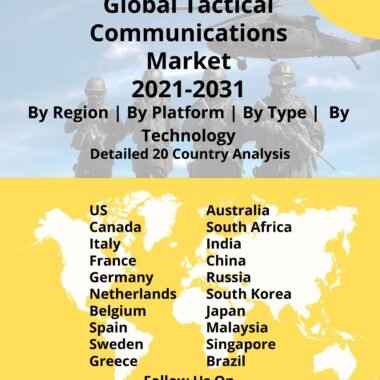Description
SATCOM Market
Frequently Asked Questions of SATCOM Market
The term “Satcom,” is a shortened version of “satellite communications,” which refers to a class of man-made geostationary communications satellites that were developed and first used by RCA American Communications (RCA Americom). These satellites received radio signals from the Earth, amplified them, and then transmitted them back to terrestrial receivers, enabling wide-area telecommunications. The use of artificial satellites to establish communication links between different locations on Earth is known as satellite communication in the field of telecommunications. SATCOM serves as the backbone of the Global telecommunications market.
SATCOM market reports, the Union of Concerned Scientists (UCS) identified 6,542 artificial satellites orbiting Earth. It was noted that 3372 of these were active satellites. Image, as well as data in both audio as well as video format, was transmitted in the form of analog and digital signals transmitted across numerous nodes in a network by artificial satellites. The Satcom industry has changed as a result of the growth of mobile satellites, low-Earth orbit (LEO), and the spread of reusable rocket vehicles for commercial, military, and aerospace uses.
Major factors driving SATCOM Market Growth
SATCOM market reports, the increased market penetration of telecommunication services within the commercial, as well as the defense segment, serves as one of the primary drivers for the growth of SATCOM market size. The expanding value chain of this industry ranges from mobile phones to communication systems. The increased market demand for technologies like Tactical LAN/ WAN, Software Defined Radio, Radio Heads, etc is poised to bolster the growth of the SATCOM market size.
One key market challenge is the growing security concerns associated with the transfer of information. Despite being a relatively recent issue, cybersecurity threats to satellite communications have already raised serious questions about the viability of satellite systems due to the potential weaknesses that they could exploit. They include launch systems, communications, tracking and command, telemetry, and mission completion. These vulnerabilities are generally mission-critical.
Trends influencing the Satellite Communication Market Size
According to a survey conducted in the year 2017 by the European Space Agency, it was noted that 43% of telecom satellites made up the satellite manufacturing revenue. On studying the percentage weight, it was noted that telecom satellites accounted for a value of 40% by weight. The statistics hereby suggest that the increased proliferation of the telecommunications sector across the global markets and the increased access to these services have proven to bolster the trends across the overall SATCOM market.
One main factor which is poised to drive SATCOM market growth is the increased market adoption of IoT-based devices. SATCOM market trends, IoT serve as end-points to a network. An increase in the number of end-points suggests an overall increase in demand for network services which in turn instates the requirement for SATCOM services as well as equipment.
SATCOM market analysis, Within the defense segment, it is seen that the increased use of mobile platforms is poised to serve as one of the main factors that drive innovation within the SATCOM equipment segment. SATCOM market trends, the use of communication devices across the various army, navy as well as airforce platforms is expected to be one of the prominent factors that bolster the growth associated with this market. SATCOM market forecast, in the commercial as well as the defense segment, it is noted that the increasing demand for high throughput satellite services and the spread of cloud-based services in ground mobility platforms will support theSATCOM market growth.
Satellite Communication Market Forecast & Dynamics
SATCOM market analysis, the overall trends associated with this market, it is noted that small-scale start-ups have been launching low-earth orbit constellations for higher internet speed as well as connectivity. The deployment of these units meets the demand for very high throughput satellites within the LEO as well as the GEO (geostationary orbits). The cost of launching satellites is also falling because of advancements in reusable rockets and the use of adaptable launch sites. Finally, satellite entrepreneurs can create enormous space objects both in space and on Earth thanks to additive manufacturing.
SATCOM Market Analysis for Recent Developments
One of the primary technology-based trends within the SATCOM market is the proliferation of smaller satellites. These technologies have smarter, compact subsystems that are now replacing larger satellites and their associated equipment. Start-ups within this segment have been taking advantage of this trend through mass production of these satellites, and modular commercial off-the-shelf hardware. Vertical integration in satellite manufacturing is also a key trend, it has optimized the overall cost of design as well as manufacturing. The use of this technology coupled with new SATCOM marketing tactics is poised to drive the growth dynamics of this market.
The market is a cornerstone of modern connectivity, playing an indispensable role in enabling communication across vast distances and supporting a myriad of applications. SATCOM technology involves the transmission of voice, data, and video signals via satellites, facilitating critical communication links for defense, telecommunications, broadcasting, and emergency response. The market is witnessing robust growth driven by the increasing demand for high-speed and reliable global communication services. Technological innovations within the SATCOM market include the development of high-throughput satellites, smaller and more efficient ground terminals, and the integration of advanced modulation and coding techniques. These advancements contribute to improved data rates, reduced latency, and enhanced overall performance.
Geopolitical considerations and the rising need for secure and resilient communication infrastructure drive investments in SATCOM capabilities globally. Nations recognize the strategic importance of maintaining reliable communication networks for defense, intelligence, and disaster response purposes. The market reflects a landscape characterized by technological excellence and a commitment to meeting the ever-growing demands of a connected world. As communication requirements continue to evolve, SATCOM stands as a linchpin in ensuring global connectivity and facilitating essential services across a spectrum of industries”
![Global_SATCOM_Market_2024-2034[1] Global_SATCOM_Market_](https://aviationanddefensemarketreports.com/wp-content/uploads/2022/08/Global_SATCOM_Market_2024-20341.jpg)






